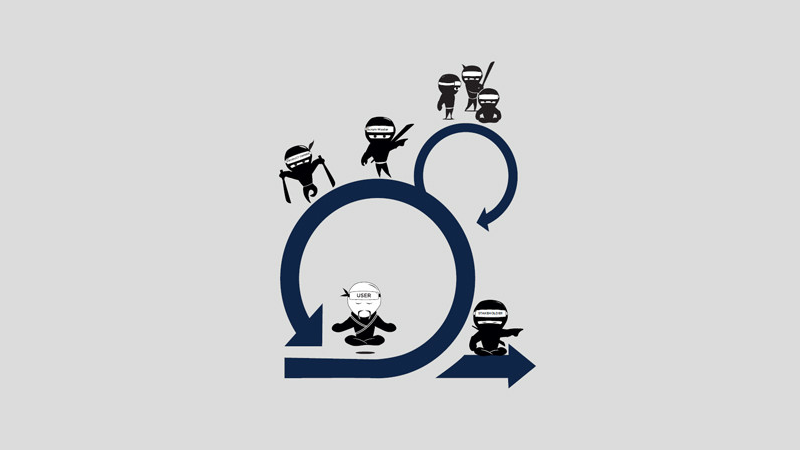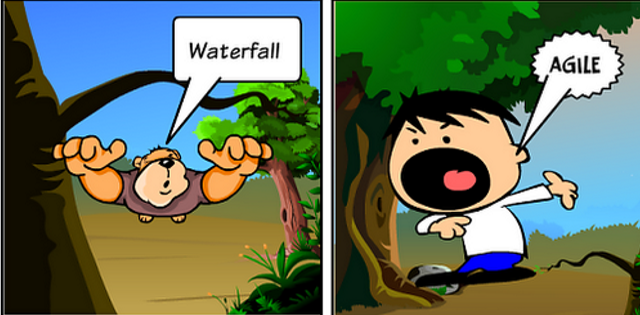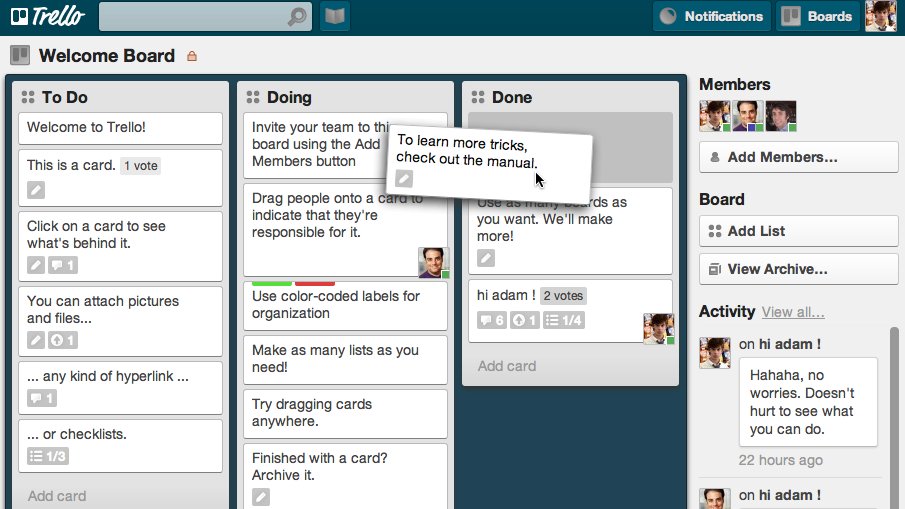Tools, Techniques, and project management methodologies
May 30, 2016 / Estimated reading time: 8 minutes

Every bright idea, despite the level of its brightness, besides the creative impulse requires cold-blooded planning. And one of the most significant results of such planning is a choice for a project management methodology and one or other project management techniques. Even the absence of clear understanding of the outcomes can be eliminated by choosing the project management methodology (you can find the perfect one in project management books, blogs, etc.) that was initially designed to help you form the goals vision during the working process.
In this article, we’ll talk about a traditional project management methodology that can help you use your resources better, avoid unexpected difficulties, and achieve your aims with minimal losses and web based project management tools that can help you with it. Besides the project management methodologies that on everybody’s lips, such as Scrum and Waterfall, we won’t ignore something more exotic, like Six Sigma, for example. Also, we’ll take a look at a couple of handy tools that you can use to facilitate the working process.
What are project management methodologies?

For ease of reading, we’ve divided the project management methodology list into several parts with different types of project management methodologies. We hope it will be easier for you to choose one of a kind rather than picking one of a plurality of choices. Let’s start with the “old school” approaches.
Step-by-step. Sequential Project Management Methodology Overview
Waterfall represents a sequence of steps from the requirements analysis to maintenance. The Waterfall is the simplest project management methodology to implement and easy to understand. After you finish one task, you jump to the next one. The waterfall project management methodology requires thorough planning which usually leads to accurate timelines and low budget losses. On the other hand, if you have no ability to predict all possible problems, you can face some unsolvable problems since there’s no possibility to correct the previous steps.
To use Critical Path Method (CPM), you should make a list of tasks that are necessary for your project to be completed. After that, you can estimate the amount of time required for finishing these tasks and all possible dependencies. According to the amount of the required time, tasks can be separated into critical (the longest ones) and non-critical. Such visualization allows the manager to allocate resources more efficiently. CPM works perfectly for the projects with short deadlines.
Critical Chain Project Management (CCPM) is a resource-based project management methodology. First, you build a project schedule. Next, you should define so-called Critical Chain, a sequence of the most crucial tasks. Finally, you can reserve the resources you have for each task of this chain. You should also provide buffers of time around the tasks. They will help ensure the project meets its deadlines. You should remember that CCPM doesn’t work well for the projects with short deadlines.
Agile Project Management Methodology and Frameworks For its Implementation
To implement Agile, you should follow the Agile manifesto. Here are the main principles: the priority of individuals and interactions between them over the tools; working software is more valuable than documentation; an opportunity to make changes during the working process. We can describe this model as the repeated cycles of software development and delivery. Continuous collaboration between the developer and customer allows defining the possible ways of modification to answer the customer’s needs. Agile project management methodology is pretty flexible and suitable in the case if you expect further changes and modifications. But here’s the main disadvantage. It’s hard to predict accurately, how long it will take to finish the project and what is the necessary amount of budget.
Scrum is probably the most well-known project management methodology framework that allows you implement the Agile methodology. A team of developers is led by Scrum Master and works in short cycles called “Sprints.” They can last from two weeks to a month. The team meets on the daily basis to discuss what has been done and what remains to be done. The scrum project management methodology is suitable for small teams and allows develop, test, and fix errors faster.
The fundamental principle of Kanban is workflow visualization. The visual representation usually takes the form of a board that is divided into the several parts that corresponding to the project’s phases, and a bunch of sticky notes that represents the tasks. It helps to measure the WIP (Work In Progress) level for every stage and use the available resources better.
In the case of Extreme Programming (XP) developers use an order of tasks, that was defined by a customer. Unlike the Scrum, XP allows replacing a particular task with the similar in case if the first one hasn’t started yet. Developers aim to write the simplest code to rich the required objectives.
Other types of project management methodologies
Lean is all about eliminating the waste. You should create a full work-process breakdown to detect possible bottlenecks, delay sources, and all types of potential troubles called “muda.” The goal is to deliver the better possible product by wasting less manpower, time, and money.
Six Sigma is the data-driven project management methodology that concentrates on measuring defects and bugs and eliminating them as hard as possible. Here are three basic components of this methodology: DMAIC (stands for define, measure, analyze, improve and control)
DMADV (stands for define, measure, analyze, design and verify)
DFSS (means “Design for Six Sigma” and can include the previous or options, like IDOV – identify, design, optimize and verify). A rating of “six sigma” means that 99.99966% of a final product is defect-free.
The weak side of Six Sigma is a low level of flexibility.
Benefits Realization project management methodology concentrates on the achievement of desirable benefits. For example, if a customer’s goal is productivity increase of 10% and he wants to achieve this goal by using a brand new Online Human Resource Management Tool, the result won’t be considered satisfactory if the total productivity growth will be equal to 5%. As you can imagine, it’s pretty hard to predict and measure the possible benefits which mean it won’t be an easy task for a developer to satisfy the customer.
Tools that Can Help in Project Management
Let’s now talk about some tools that can help you handle your project and implement project management methodologies.
Kanban-style Visualization
As it been said, Kanban involves the use of a board with the sticky notes. If you want to organize and visualize your project using the Kanban concept, you should try Trello:

It allows you create packs of cards each of which corresponds to the particular project or project’s step. You can manipulate each card: hold discussions, vote, attach files, use tags, add due dates for tasks, etc. All team members can see the changes real-time and get e-mail notifications. Besides the online version, there are mobile apps for Android and iPad.
Advanced Online Gantt Charts
What is a Gantt chart in project management? What role does it play in a project management methodology?
Gantt charts allow representing the tasks of your project in the form of a group of bars. The bars display the predicted start and end date of the particular task and its current state. It is a pretty common practice to use those chart for visualizing the project’s progress either it home construction or software development. To start using Gantt charts in your project, you can use free online project management with Gantt Charts – GanttPRO:

With a Gantt chart creator – GanttPRO, you can create Gantt charts with ease, share them with other team members giving them right to view or edit the particular chart. Some of the pre-created Gantt chart templates can help you on your first steps. The notification system will keep you informed about the last changes. Critical path finder, exporting features, scaling, and other capabilities should also draw your attention.
All-in-one Online Project Management Tool
If you don’t follow the principle “One task, one tool,” you can try Zoho Projects:

It has so many tools that there’s no place to describe them all in one single paragraph. It allows you create Kanban boards to visualize the workflow. An interactive calendar, chat rooms, message boards will be pretty helpful to coordinate your team. There’s instrument for creating Wiki pages dedicated to specific parts of your project, reporting software, document management tool with the version control support, etc.
Conclusions
We have discussed only the most popular project management methodologies, and it’s clear there’s no standard project management methodology. Each of them has its pros and cons, and it’s important to remember that each of them was designed for a particular type of projects. Despite the complexity of your idea, you can always find a suitable methodology of project management. Just remember that there are no silver bullets among them. We hope that this brief project management methodology overview will help you make the right choice.
